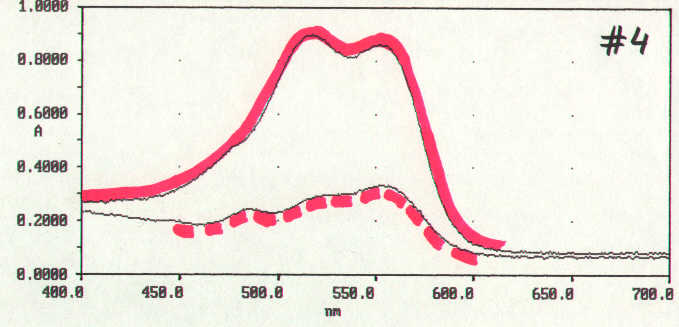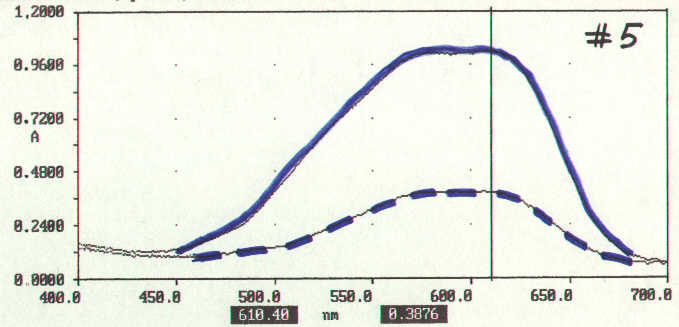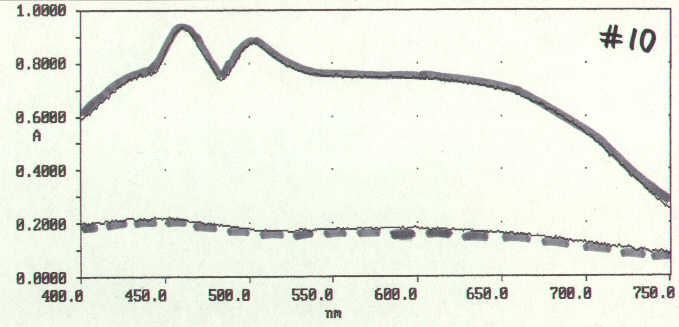|
|
|
 (it must be noticed that the Methyl Red produced very little dichroism - as I assured in my own experiments - and we
should be notably grateful to the sharp observation of Heilmeier and Zanoni who did not miss
the effect, which they had called "guest-host" effect:dye molecules were guest in the anisothropic liquid crystal host media).
(it must be noticed that the Methyl Red produced very little dichroism - as I assured in my own experiments - and we
should be notably grateful to the sharp observation of Heilmeier and Zanoni who did not miss
the effect, which they had called "guest-host" effect:dye molecules were guest in the anisothropic liquid crystal host media).
AVAILABLE DICHROIC DYES
The following dichroic dyes have been selected for their superior
properties you might purchase (#10 however is a so-called
"black mixture" currently available from alternative source and
presented for comparison purpose; one can noted that "clear" state
in #10 definitely better than for presented dyes, while
the "dark" state is about the same. This is because in #10 cell
the vertically alligned orientation film was applied in differ of
the rest of dyes; and the "dark" state was caused by application of
voltage, while for others LC-cells the only cells' rotation toward
light polarization was applied) :
Section for Buyers of "know-how".
We would like to stress here on the one old problem - namely dimming mirrors for automotive application.
Any your comments,
suggestions, questions and/or purchases are
welcome !
RESCUE TECHNOLOGIES
This page has been accessed









Untill 1996 there was a niche for LCD's here: a cholesteric dichroic mixture provided attenuation in "Off" state (no voltage applied) and
made rear view mirrors bright in "On" state (about 15-20 Volts were applied).
After introducing of legislation required that rear view mirrors must be bright in "Off" state the LCD's approach was failed.
Only the elctro-chromic mirrors are on the market now in some luxury cars.
There were never lack of researches, articles or patents on the subject
but another legislation requirement - at least 70% reflectance in "Off"
state - made all LCD's approaches to be failed because of necessity of using at least one sheet of polarizer having transmittance only 40% about in one direction ...
Here is the answer on the question : "Why there is no LCD-type dimming mirror on the market ?"
We claim that our group possesses with "know-how" to make LCD approach to be applicable for the rear view mirrors - a big spot on the automotive market and possibly for alfa-numerical displays providing them a quite distinctive bright appearance.
The details' disclosure is available for those who will be able to arrange viable contract (some demos however are available under non-disclosure agreement).
The main advantages of the LCDs approach over the electro-chromic one are:
- much lower power consumption, which is typical for all LCDs don't required of lighting and which promises the wireless mirror in differ of the electro-chromic one;
- possible lower cost and zero capital investments - some current plants surplusing information display (lap-top) market might be just successfully re-oriented.
E-mail us by clicking
here.
Name and Location:
PO Box 16431
St Paul, MN 55116
USA
Phone and FAX (651)699-6214
Last modified: July 15, 1999